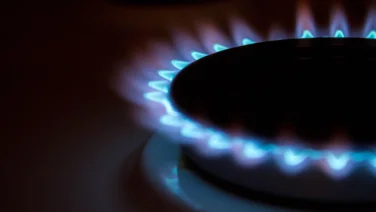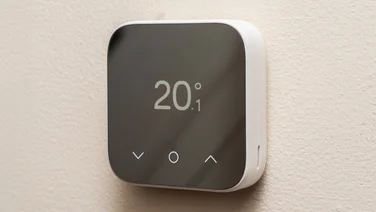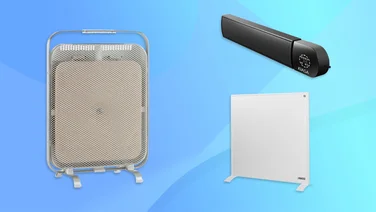To help us provide you with free impartial advice, we may earn a commission if you buy through links on our site. Learn more

In recent years, solar panels have become more popular than ever before, with the UK seeing more than 17,000 new solar installations each month so far in 2023. This isn’t surprising, given that solar panels can dramatically cut your energy bills and even make you self-sufficient. With energy bills at an all-time high, a solar panel installation will pay for itself faster than it has done in the past, currently in about seven years. But what does a solar panel installation involve?
Solar panels are pretty quick to install, normally taking two days. It isn’t a particularly disruptive process, taking place almost entirely on your roof rather than inside your home. The only internal piece of most solar PV (photovoltaic) systems is the inverter, which will usually sit in your loft. Compared with having windows or a kitchen fitted, a solar installation is pretty low hassle.
As explained in our in-depth article, Are solar panels worth it?, the average UK solar panel system costs about £5,000, and this price includes installation by MCS-accredited solar panel fitters and qualified electricians. Here’s our step-by-step guide to what to expect.
Get a free solar panel quote today
Looking for the best price on solar panel installation? Take our quick survey below and we’ll provide you with a free quote that’s tailored to your needs.
How are solar panels installed?
Solar PV panels are sophisticated devices that last for many years (see our article How long do solar panels last? for more information). Most come with a 25-year warranty, and will likely produce most of your electricity for even longer than that. And they’re actually very quick to install.
In part this is because they don’t contain any moving parts, and they’re built to be as sleek and sturdy as possible – they’ve got to survive on your roof for decades, after all.
In fact, your roof may be in more need of TLC than the solar panels you want installed on it. So first, a professional surveyor will check your roof and rafters to ensure that a solar panel installation can go ahead safely. The results of the survey may affect the price quoted by your solar panel providers.
With that done, the installation can begin. Make sure your installers are accredited under the government’s Microgeneration Certification Scheme (MCS), the consumer protection scheme for renewable energy installations.
How long do solar panels take to install?
Solar panel installations typically take about two days to complete. You’ll find some providers promising to do it all in a day, but this is usually the time outside that of putting up and removing the scaffolding required to access the roof area.
Note that the time it takes to install solar panels could be affected by the type of property, the size and complexity of the solar panel system, as well as any unexpected weather conditions that might delay the work.
READ NEXT: How do solar panels work?
What are the main steps of a solar panel roof installation?
The basic steps of a roof-mounted solar panel installation are the same, regardless of the size and number of PV panels you’re having installed. Here’s a quick summary:
1. Scaffolding
Your installers will first need to construct scaffolding – or get a third-party scaffolding firm to do it – to give them safe access to your roof. Of all the steps, this one takes the most time – usually about a day.
2. Fixing brackets
Your installers will then attach fixing brackets onto the rafters of your roof, which need to be in decent nick to securely support your solar PV system for years on end. The installer will need to remove some roof tiles to give the solar panels a stable foundation in your rafters.
3. Mounting system
The mounting system is a framework that runs in a criss-cross pattern across your roof to support the solar panels. This system also sets your panels at the best angle to collect as much sunlight as possible to convert into electricity.
4. Inverter
The inverter is the device that converts the sun’s energy into electricity that you can use safely in your home. This is the one piece of the solar panel system that goes inside your house, usually in the loft. Installing the inverter will take between 4-6 hours, depending on the size of the system.
If you’ve opted to have a battery as part of your system, for storing excess electricity to use later, then it will be installed now and connected to the inverter.
5. Solar panels
Now, the big moment: your solar panels are placed on the frame. Once your installer is happy with the setup and the angle of the panels, they’ll be secured to the frame. Most panels come pre-wired, so they just need to be connected to the inverter.
6. Consumer unit
Once your solar panel installation is complete, the whole system is connected to the consumer unit, which will sit in your fuse box. This enables you to monitor the amount of electricity the solar panels generate. In many cases, you’ll be able to monitor your panels remotely via an additional meter, and even your computer.
Can I install solar panels by myself?
As you can see, installing solar panels isn’t a the most technically difficult process. The time-consuming and physically demanding part of the process concerns the scaffolding; most of the wiring is done back in the solar panels factory. So, while we’d understand that some might be tempted – and technically and legally, yes, you could do it yourself – we wouldn’t recommend it.
Installing solar panels isn’t just dangerous (mainly due to the height and the wiring), but it also needs to be done to a high standard to ensure that you get the best out of your system. No-one will mind much if you do a less than professional job when you’re painting the spare room, but when you’re investing in a solar panel system, it’s just not worth cutting corners to save a few pounds.
Reputable solar panel providers ensure that their installation partners are MCS accredited and undertake contractor safety engagement checks – and this is the reason you, too, should double-check that your installers have passed these checks.






